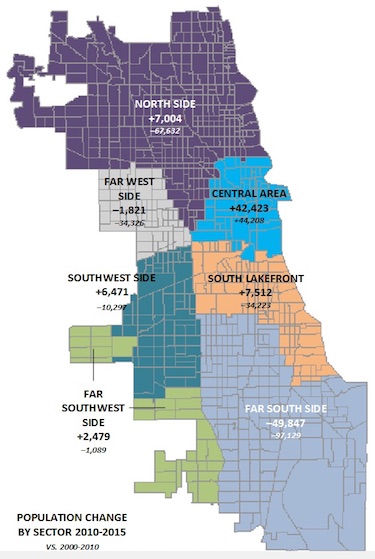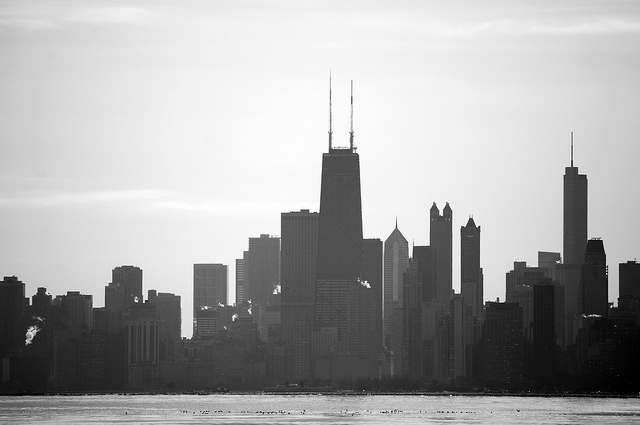Census Shows Loop Is Booming, South Side Population Is Plummeting
By Emma G. Gallegos in News on Dec 13, 2016 10:16PM

American Community Survey (via Crain's)
The American Community Survey conducts surveys every year unlike the official census. Though it is not quite as accurate, it helps to paint a picture of what happens in the ten years in between the census. The numbers for 2015 were just released and reported by Crain's.
The numbers show that Chicago has rebounded from the subprime recession and that the city's population has made modest gains. The city gained an additional 14,000 people, making its 2015 population 2,717,534. But the story is wildly different depending on what part of the city you're looking at. Crain's calls this data a tale of three cities: "one prosperous and growing, one vanishing, and the third treading water."
The city center is booming, as anyone who has noticed the breakneck pace of construction in the Loop can attest. Nearly as many people moved there from 2010 to 2015 (42,423) as moved there between 2000 and 2010 (44,208). The Northside has seen gains (7,004) and so did the South Lakefront area (7,512) after plummeting during the aughts.
Outside of the lakefront area, the population of the South Side has continued to plummet. While the South Side lost 97,129 people from 2000 to 2010, it lost another 49,847 more residents from 2010 to 2015. That represents a 10 percent loss in 5 years. Crain's says the areas being hammered were "once-solidly middle-class, industrial African-American neighborhoods," including Auburn Gresham, Englewood, West Englewood, Roseland and Chatham.
The far West Side has seen a decline of 1,821 residents—a tapering off compared to the 34,326 lost during the aughts. The Far Southwest Side has fully rebounded from the losses of the last decade and the Southwest Side has seen most of its losses regained over the past five years.
